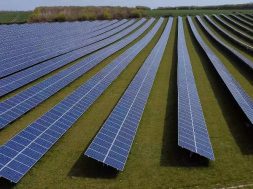
Alta Devices raises its GaAs single-junction solar cell efficiency world record to 28.9%
The US National Renewable Energy Laboratory (NREL) has certified that Alta Devices of Sunnyvale, CA, USA (a subsidiary of Hanergy Thin Film Power Group Ltd of Beijing, China since 2014) has raised its own world record for gallium arsenide (GaAs) single-junction solar cell energy conversion efficiency from 28.8% to 28.9%.
“Alta Devices goal is to continue to lead the industry in solar technology and to enable a broad range of autonomous systems,” says CEO Jian Ding. Every time an autonomous system or vehicle has to stop to refuel or recharge, it requires intervention and is no longer truly autonomous. Alta focuses on developing the solar technology specifically for autonomous power, allowing vehicles to seamlessly recharge while in motion.
Alta has set the record for GaAs single-junction solar cell efficiency five times since 2010. “Achieving a new record for this class of devices is a landmark because a 1-sun, 1-junction cell is the archetypal solar cell,” says co-founder professor Harry Atwater of California Institute of Technology (CalTech). “The fact that Alta is breaking its own record is also significant since many other teams have been actively attempting to break this record,” he adds.
“Alta has the first solar cell based on internal luminescence extraction, which has enabled Alta to remain ahead of others,” reckons co-founder professor Eli Yablonovitch of the University of California Berkeley. “This scientific principle will be in all future high-efficiency solar cells.”
The firm recently launched its Gen4 AnyLight commercial technology, demonstrating a significant weight reduction from the previous version, resulting in an improved power-to-weight ratio of 160%. This is critical for future autonomous unmanned aerial vehicles (UAVs), electric vehicles (EVs) and sensors, it is reckoned, as it can be used to generate substantial power over small surfaces without compromising design criteria.
















